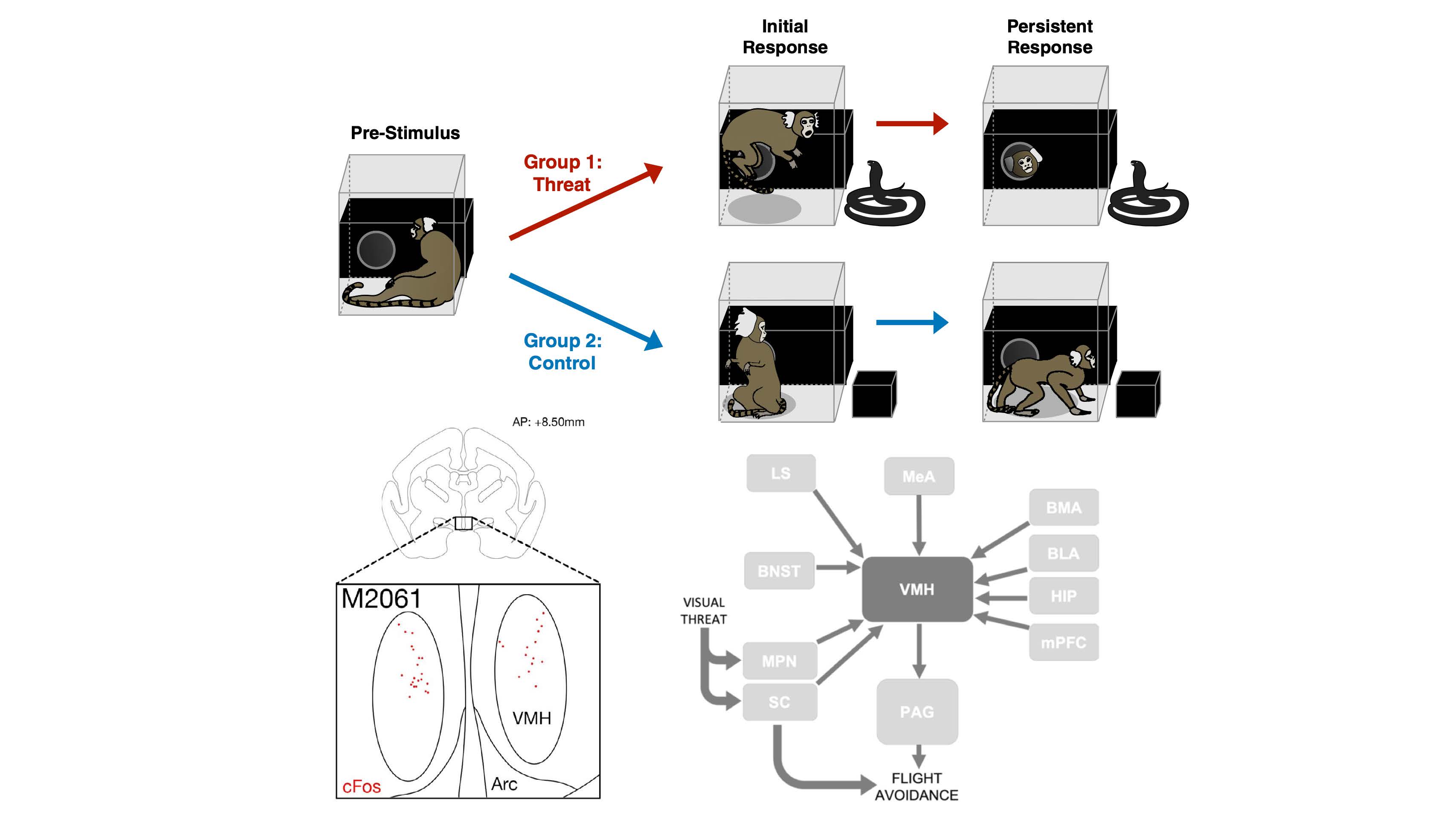Mapping the Neural Circuitry of Predator Fear in the Nonhuman Primate
Date:26-12-2022 | 【Print】 【close】
The innate fear networks are becoming better known in rodents, with major discoveries having been made in the last decade. But to really exploit them, we need to compare these networks between rodents and primates, and understand where the points of convergence are.
A study has been release on this topic, based on a collaborative research team including Dr. Montardy from the Shenzhen Institute of Advanced Technology (SIAT) of the Chinese Academy of Sciences, together with the European Molecular Biology Laboratory (Rome, Italy) and handled at the Monash University (Melbourne, Australia).
The study was published in Brain Structure and Function in 2020, and was awarded 'Editors' Choice', an award given by the Nature-Springer Group and the journal Brain Structure and Function during the Cajal Club at the Society for Neuroscience conference 2023.
The team studied the conservation of fear networks in primates, and in particular its medial hypothalamic defensive system. It was designed to elicit a robust predator-evoked escape response in the marmoset monkey, a nonhuman primate, under controlled laboratory conditions, immediately followed by c-Fos mapping combined with anatomical tract tracing to identify the neural circuits involved.
These explosive fear behaviors had never been studied in the laboratory, and their networks remained unknown. Thus, the researchers were able to validate for the first time this new model and protocol for studying fear.
Using this method the team revealed that the medial hypothalamic defensive system, known to be essential for defensive responses to predator in rodents is engaged during predator defense in the marmoset. The researchers discovered that the primate ventromedial hypothalamus (VMH) also receives major inputs from medial nucleus of amygdala (MeA), a nucleus known to convey information from the accessory olfactory system in rodents but that may have elaborated its non-olfactory inputs as vision evolved to become the dominant sense in primates.
These data argue for a conserved role of medial hypothalamic instinctive behavior networks across mammals, including humans. These findings have important implications for our understanding of fear in humans.

Figure: Top: Snake presentation evokes flight, sustained avoidance, and vigilance in the primate; Bottom left: Threat-evoked cFos immunolabel in VMH and PAG; Bottom right: Summary of the VMH afferents and efferents in the primate. Dark grey arrows denote pathways that were identified in this study. (Image by Dr. Montardy)

The award photo (Dr. Montardy, second from the left), during the Cajal Club ceremony. (Image by Dr. Montardy)
Media Contact:
ZHANG Xiaomin
Email:xm.zhang@siat.ac.cn